《Curriculum Development》
| 作者 | 编者 |
|---|---|
| 出版 | W.B.Saunders Company |
| 参考页数 | 851 |
| 出版时间 | 1960(求助前请核对) 目录预览 |
| ISBN号 | 无 — 求助条款 |
| PDF编号 | 812505688(仅供预览,未存储实际文件) |
| 求助格式 | 扫描PDF(若分多册发行,每次仅能受理1册) |

ⅠIntroduction1
1The Nature of an Educational Program2
Definitions and Basic Concepts2
General Education4
Education for Adults11
Specialization12
Education for the Professions13
Characteristics of a Profession13
Pattern of Undergraduate Education in Relation to Professional Education14
Development of Curricula in the Professions14
The Education of Teachers15
Programs of Professional Education for Engineering16
Modifications of the Medical Curriculum17
Nature of the Nursing Curriculum Contrasted with Other Professional Curricula18
Development of Curricula in Nursing21
Early History of Nursing Curricula in Colleges and Universities21
National League Leadership in Curriculum Development35
Present Status of Curriculum Planning37
Academic Mitosis38
Length of Nursing Program39
Suggested Pattern for the Basic Collegiate Program42
Differences between the Collegiate and the Diploma Program59
Suggested Program of Study in Basic Nursing for a Three Year Diploma Program59
Suggestions for Further Reading64
2Faculty Participation in Curriculum Development67
Workshops,Institutes,and Study Groups67
How Not to Conduct a Committee on Curriculum68
Constituency of the Committee on Curriculum69
Student Participation71
Utilizing the Services of a Consultant75
Faculty Study of the Teaching Process76
Suggested Principles of Curricular Planning77
Installation of Curricular Changes78
Suggestions for Further Reading79
3Planning Class and Practice Schedules82
Principles in Planning Schedules82
Factors in Planning Schedules for a Broad-Fields Course86
Class Schedule for Unit on Diseases of the Digestive System87
Schedule of Class and Practice for a Semester88
Schedule for Faculty Members90
Summarizing Statement91
Suggestions for Further Reading92
ⅡMajor Tasks in Curriculum Development93
4Development of Objectives94
Problems for Study94
Sources for Deriving Objectives95
Studies of Learners95
Who Are Our Students?96
What is Maturity?96
Emotional Problems of Late Adolescence97
Developmental Tasks of Adolescents99
Inferring Objectives from Student Needs102
Social Needs103
Activity Analyses103
Studies of the Broad Needs of Society105
Study of Subject Matter118
Screening the Inferred Objectives119
Educational Philosophy119
Various Philosophic Positions122
The Catholic Philosophy of Education122
A Theo-centric Philosophy in a Democratic Society124
Experimentalism124
A Realistic Philosophy128
Idealistic Philosophy130
Emerging Philosophies130
Examinations of Statements of Philosophy131
Report of President's Commission on Higher Education131
Statement of Philosophy in Schools of Nursing131
Educational Psychology133
Theories of Learning133
Variables Influencing Learning152
Stating Objectives in a Meaningful Way170
Classification of Educational Goals171
Cognitive Domain175
Knowledge175
Intellectual Abilities and Skills176
Problems of Learning in the Three Domains188
Problems in Cognitive Learning188
Rote Learning and Retention188
Comprehension:The Development of Understanding191
Problem-Solving193
Becoming Aware of Problems193
Clarifying a Problem193
Proposal of Hypotheses for Solution of the Problem194
Evaluation of and Selection from among Hypotheses195
Testing the Hypothesis196
The Affective Domain197
Attitudes197
Interests200
Guiding Students in the Acquisition of Motor Skills201
Step 1.The Student Relates the New Experience to Previous Learning201
Step 2.The Instructor Analyzes the Procedure202
Step 3.The Instructor Demonstrates the Procedure203
Step 4.The Student Practices the Procedure205
Step 5.Together the Instructor and Student Evaluate the Student's Performance and Set New Goals212
Suggestions for Further Reading212
5Selection of Learning Experiences218
Objectives as Criteria by which Learning Experiences Are Selected218
Principles in Selection of Learning Experiences220
Learning Experiences in the Unit on the Digestive System224
Analysis of the Objectives224
Important Principles225
Method Depends upon Objectives226
Learning Experiences by which Certain Behaviors Can Be Acquired227
Acquisition of Facts227
Ability to Recognize Important Symptoms228
Learning to Exercise Judgment229
Factors Which Promote Recovery229
Understanding of Basis of Medical and Nursing Care upon Symptoms230
Understanding of Contribution of the Several Aspects of Treatment230
Concept of Preventive Medicine231
Understanding of Principles231
Understanding of Emotional Factors234
Suggestions for Further Reading235
6Organization of Learning Experiences236
Problems for Study237
Problems and Principles in Developing an Effective Organization237
The Nature,Function,and Importance of Organization237
Criteria of an Effective Organization241
Vertical Organization241
Horizontal Organization243
Examples of Continuity,Sequence,and Integration in a Basic Nursing Program247
Example of Continuity in a Basic Baccalaureate Program247
Example of Continuity and Integration of Concepts Related to the Family Unit in Health and in Sickness248
Example of Sequence of Curricular Thread250
Organizing Elements251
Organizing Principles256
Organizing Structure261
Dimensions261
Structural Organization at the Largest Dimension263
Process of Planning a Unit of Organization270
Definition and Nature of Resource Units270
Structure and Content of Resource Units271
Unit Organization in Nursing Courses271
Study Guide for Nursing in Diseases of the Digestive System274
Medical Nursing274
Objectives274
Doctor's Lectures(if medical lectures are used)274
Clinic or Ward Walk(may be substituted for one nursing class)274
Nursing Classes274
Pharmacology274
Vocabulary for This Unit275
Questions for Study275
Surgical Nursing276
Objectives276
Meaning of Suffixes276
Additional Vocabulary277
Questions for Study277
Study Guides for Use in Clinical Experience278
Self-directing Study Guides279
Suggestions for Further Reading279
7Evaluation of the Program281
Concepts of Appraisal281
Achievement Testing284
Records of Student Progress287
Faculty Study of Student Progress288
Appraisal Program for a Particular Set of Objectives290
Summary of Principles of Evaluation of an Educational Program292
Suggestions for Further Reading293
ⅢFoundations of the Nursing Curriculum295
8The Humanities296
Communication Skills298
Systematic Study of Literature303
(1)The English Bible304
(2)Ancient Greek Literature304
(3)Selections from Chaucer's Canterbury Tales305
(4)Shakespeare305
(5)English and American Poetry305
(6)Prose Fiction,Selected from European,English,and American Writers306
(7)Modern Drama306
The Study of History307
(1)Ancient Greece and Rome308
(2)The Middle Ages309
(3)The Renaissance and Reformation309
(4)The Intellectual Revolution of the Seventeenth Century,and the Age of Enlightment309
(5)Main Trends from the French Revolution to the Present309
Conclusion310
Suggestions for Further Reading311
9Physical and Biological Sciences312
The Sciences in a Diploma Program313
The Sciences in a Collegiate Program314
Organization of Chemistry Courses314
Physics in the Nursing Program315
Anatomy and Physiology316
Microbiology and Its Applications318
Research in Science Education321
Securing Core Material for the Organization of a Nursing Science323
Source Materials Useful in Teaching Chemistry327
Films327
Reference Books327
Suggestions for Further Reading328
10The Behavioral Sciences330
Study of Fields Related to Human Behavior331
Content of Psychology Most Essential to Nurses331
Psychology of Efficiency332
The Neural System332
Heredity and Environment332
Attending and Perceiving332
Motivation332
Emotions333
The Learning Process333
Mental Illness333
Individual Differences334
Topics Included in Study of Principles of Sociology334
Cultures334
The Family as a Social Institution334
Personality Traits334
Social Processes334
The Modern Community335
Medical-Social Problems335
Presentation of Content in Psychology and Sociology335
Conclusion336
11Introduction to Nursing Care337
Base of Therapy Preceding Practice337
Traditional Place and Organization of the First Course in Nursing339
Preparation and Responsibility of the Instructor339
Terminology Used to Describe the Course339
Traditional Organization of the Course340
Newer Emphases in the First Course in Nursing343
Application of the Social Sciences343
The Concept of(1)the Health Team and(2)the Nursing Team345
Nurse-Patient Relationships346
Conversational Skills346
Progressive Activity Sequence348
Planning Nursing Care349
Integration of Fundamental Concepts and Nursing Skills in Their Clinical Relationships350
Suggestions for Further Reading354
ⅣTeaching in the Hospital Divisions355
12What Is Clinical Instruction?356
Historical Developments in the Field of Clinical Instruction356
Early References357
Preparation of the Instructor358
Early Appointments360
Titles of Positions in Clinical Instruction362
Dilemma of the Instructor Without Authority363
Functions of the Instructor in Clinical Nursing363
Some Functions of the Instructor in Clinical Nursing366
Qualities Needed for Clinical Instruction367
Preparation of the Instructor in the Clinical Area367
Introducing a Plan of Clinical Instruction369
Planning a Program of Clinical Instruction372
Orienting Inexperienced Ward Instructors373
Tentative Plan for Subjects for Conferences374
Summary375
Suggestions for Further Reading375
13Teaching in the Hospital Divisions377
Definition of Terms377
Underlying Assumptions379
Achieving the Objectives of Clinical Practice379
Objectives in Clinical Practice in Medical and Surgical Nursing380
A Positive and Practical Health Ideal381
Understanding of Emotional Factors in Illness381
Using Progress Notes and Laboratory Findings382
Ability to Observe385
Ability to Assist Doctors with Diagnostic Measures and Treatments386
Ability to work with Other Professional Workers389
Ability to Teach Patients389
Further Values of Clinical Practice391
Student Activities to Attain the Objectives of Obstetrical Nursing Expeirence392
Summarizing Statement396
Different Types of Learning Experiences Needed397
Evaluating Teaching Possibilities in a Clinical Area402
Studies of Diagnoses403
Record of Nursing Procedures412
Relation of the Medical Staff to the Teaching Program413
Students' Assignments413
Factors to Consider413
Functional Assignment,Case Method,Team Method415
Planning Nursing Care418
Principles in Planning Nursing Care418
Teaching Students to Plan Nursing Care421
Directions for Planning Nursing Care423
Factors to Consider in Planning Nursing Care423
Problem in Planning Nursing Care430
Placement of Patients432
Summarizing Statement435
Planning to Meet Recreational Needs435
Teaching the Use of the Clinical Record435
Nurses' Notes436
Use of a Clinical Record438
Checking Clinical Records438
The Non-Segregated Service439
Guide to Admission Clerks in the Admission of Patients to Specified Services442
Recording Experience on a Non-segregated Division443
Experience on a Private Division444
Summarizing Statement444
Suggestions for Further Reading445
14Special Kinds of Clinical Experience447
Senior Experience447
Objectives447
Planning the Experience448
Night Nursing Experience451
Summarizing Statement456
Suggestions for Further Reading456
15The Nurse as a Teacher457
Problems for Study and Discussion457
Objectives of the Experience458
Selection of Learning Experiences458
Principles in Planning Instruction for Patients463
Developing in the Staff the Concept of the Nurse as a Teacher466
Unit of Staff Education Program:Teaching Diabetic Patients468
Objectives468
Methods468
Summarizing Statement469
Suggestions for Further Reading469
16Rotation for Clinical Experience471
Principles in Planning Clinical Rotation471
Making a Plan of Clinical Rotation476
Rotation within a Department480
Planning for New Groups of Students on the Medical Nursing Service481
Planning for Seniors481
Planning for Juniors482
Levels of Experience483
What Is Meant by Levels of Experience?483
Methods of Evaluating484
Outline of a Plan for Experience in Surgical Nursing484
Summarizing Statement489
Suggestions for Further Reading491
ⅤPlanning a Course493
17A Broad-Fields Course494
Problems for Study494
The Organizing Force in a Course495
Physical Sciences as the Organizing Force in a Broad-Fields Course for Preclinical Students495
Synthesis of the Biological Sciences497
Integration of Concepts and Skills in Broad Areas of Study497
Concepts and Skills from Related Therapies(Physical Therapy and OccupationalTherapy)498
Poliomyelitis in the Total Curriculum499
Pathology501
Concepts and Skills Related to Nursing in Disaster501
A Broad-Fields Program for Freshmen in a Diploma Program504
Bases for Organization of the Course505
Suggested Assignments for Various Class Sessions516
Suggestions for Further Reading533
18Organization of a Course in Medical and Surgical Nursing535
Problems for Study535
Systemic Approach536
Principle of Homeostasis as the Organizing Force in Medical Nursing537
Problem-Centered Group Approach538
Reactions to and Manifestations of Disease541
Critical Consideration of Various Approaches542
Problems Approach542
Symptoms Approach543
Teaching by Regions544
Teaching Graduate Nurses and Teaching Basic Students546
Suggestions for Further Reading546
19Interweaving of Social Aspects of Nursing throughout the Curriculum547
Influence of Social Factors upon Nursing Care548
Use of Group Conferences548
Integration of Social Factors in Study of Diabetes Mellitus549
Faculty Study toward the Integration of Social Aspects of Nursing550
Use of Community Facilities551
Interdepartmental Relationships551
Social and Health Needs on Each Service552
Ways and Means of Achieving Integration in Existing Curriculum552
Survey of Hospital Facilities552
Summarizing Statement553
Safeguards to Observe in Collecting and Organizing Data553
Use of Graphs555
Summarizing Statement559
Suggestions for Further Reading559
References Relating to the Social Sciences560
ⅥClinical Instruction and Experience561
20Experience in Medical Nursing562
Problems for Study562
Introduction563
Administration of Medications563
Objectives of Practice564
Provision of Equipment566
A System for Administration of Medications566
Supervision in Various Methods of Administration570
Understandings and Skills570
Plan for Supervising Students in Administration of Medications576
Summarizing Statement579
Student Experience in Radiology Department581
Objectives of Practice581
Suggestions for Further Reading584
21Preoperative,Operative,and Postoperative Learning Experiences in the Basic Curriculum585
Introduction585
Objectives of Student Experience586
First Level Experience586
Second Level Experience586
Instructor in Clinical Area587
Educational Facilities587
Levels of Experience590
First Level Experience590
Second Level Experience595
Recording Observations599
Evaluation of Student Performance599
Summarizing Statement600
22Instruction in Clinical Nutrition and Diet Therapy601
Some Earlier and Current Recommendations and Plans602
The Bases and Formulation of Objectives for Instruction in the Subject Matter of Nutrition604
Suggestions for the Teaching of Nutritional Subject Matter to Students of Nursing606
Evaluation of Student Progress615
Directions for Test Exercise616
Some Principles Involved in the Use of Diets Restricted in Sodium617
References for Students of Nursing619
References Concerning Methods and Approach619
23The Family Unit in Health and in Sickness621
Problems for Study621
The Family:The Basic Unit in Society622
Effect of Social Class upon Family Life623
Family Developmental Tasks623
Expanding Families624
Childbearing Families627
Families with Preschool Children627
Families with School Children630
Families with Teenagers630
Contracting Families630
The Dynamics of Family Interaction631
Family Crises632
Learning Experiences in Relation to the Family Unit637
Family-Centered Care640
Student Experience in Family Care Programs640
Dealing with Individuals or Groups in a Helping Relationship642
Psychiatric Nursing642
Study of Observation646
Study of the Biosocial Bases for Nursing Care648
Minimal Content in Psychiatric Nursing for Basic Curriculum652
Provisions for Experience in Psychiatric Nursing655
Psychosomatic Nursing658
Plan for Teaching659
Suggested Content for Teaching of Psychological and Psychiatric Components on a Medical Service661
The Maternity Cycle662
Exercises for the Expectant Mother and during the Postpartum Period664
Growth and Development669
Student Experience in the Care of Children671
Resources for the Instructor677
Special Study in Universities678
Councils,Committees,or Commissions on Aging678
The National Committee on the Aging678
World Mental Health Year679
Suggestions for Further Reading679
Family Development679
Growth and Development681
Physical Growth681
Mental Development682
Emotional Development in Childhood and Adolescence682
Personality Development in Infancy and the Preschool Years683
Personality and Social Development in Childhood and Adolescence684
Psychosomatic and Psychiatric Nursing685
Care of Mothers and Children687
Comprehensive Care of the Family690
24Student Experiences in the Outpatient Department691
Objectives of Student Experience691
Selection of Learning Experiences692
Understanding of the Effect of Social Factors692
Understanding of Programs of Medical Care and Health Promotion696
Summarizing Statement697
Ability to Observe and Recognize Importance of Symptoms698
Development of Skills in Assisting with Examinations and Treatment698
Ability to Make and Carry Out Teaching Plans699
Summarizing Statement701
Planning Clinic Rotation702
Summarizing Statement706
Records of Clinic Experience707
Summarizing Statement712
Suggestions for Further Reading712
ⅦAids to Learning713
25Methods of Teaching714
Lecture Method714
Formal Course Work715
Group Discussion715
The Process of Group Discussion715
Group Dynamics Technique717
Discussion Methods Used in Clinical Instruction719
Orientation to the Department724
Instructions for Preparation for Ward Classes726
Content of Typical Ward Classes726
Ward Class on Pernicious Anemia728
Evaluation of a Series of Clinical Classes730
Ward Clinics730
Ward Conferences732
Morning Conference736
Case Method738
Symposium739
Examples of Discussion Method by Members of the Medical Team740
Demonstration Methods741
Role Playing or Sociodrama742
Rumor Clinic742
Nursing Rounds742
Laboratory Teaching743
Summarizing Statement744
Suggestions for Improving Methods of Teaching745
Suggestions for Further Reading745
26Nursing Studies and the Use of Library Resources747
The Era of Case Studies748
Newer Types of Studies749
Suggested Outline for the Study of a Patient749
Summarizing Statement750
Writing Effectively750
Evaluation of Texts and Reference Materials755
The Instructor Selects Textbooks755
Students Learn to Judge Published Material756
List of Textbooks in General Medical Nursing Written for Basic Students758
Textbooks in Pharmacology Written for Basic Students760
Ward Libraries761
Abstracting Service763
Machine Searching of Literature763
Utilizing the Professional Services of the Librarian766
Summarizing Statement770
Suggestions for Further Reading770
27Audio-Visual Materials in Teaching773
Definition774
Criteria for Selection of Audio-Visual Materials774
Types of Audio-Visual Materials777
Contrived Experiences779
Dramatic Experiences780
Demonstrations781
Field Trips783
Exhibits784
Television787
Motion Pictures788
Still Pictures,Radio,and Recordings790
Visual Symbols796
Verbal Symbols800
Evaluation801
Basic Sources of Audio-Visual Materials804
Sample Resource Unit on Nursing in Conditions of the Circulatory System805
References808
Sources of Information on Audio-Visual Materials810
Suggestions for Further Reading813
ⅧResearch in Curriculum Development815
28Research in Curriculum Development816
Historical Resumé of Curriculum Research816
Contributions Which Research Can Make to Curriculum Development818
Research Studies Concerned with Improvement of Educational Experience818
Research Studies Concerned with Learning and Growth820
Inferring Learning Needs820
Inferring Objectives in Nursing Service Administration821
Selection of Learning Experiences822
Organization of Learning Experiences825
Development of Continuity and Sequence825
Ability Grouping826
Preparation for Curriculum Development831
Preparation for Research831
Suggestions for Further Reading832
Index833
1960《Curriculum Development》由于是年代较久的资料都绝版了,几乎不可能购买到实物。如果大家为了学习确实需要,可向博主求助其电子版PDF文件(由 1960 W.B.Saunders Company 出版的版本) 。对合法合规的求助,我会当即受理并将下载地址发送给你。
高度相关资料
-
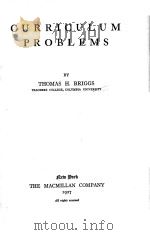
- CURRICULUM PROBLEMS
- 1927 THE MACMILLAN COMPANY
-
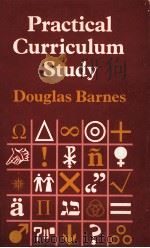
- Practical curriculum study
- 1982 Routledge & Kegan Paul
-

- IDEOLOGY AND CURRICULUM
- 1979 ROUTLEDGE & KEGAN PAUI
-

- SCHOOL CURRICULUM PLANNING
- 1986 HODDER AND STOUGHTON
-

- ADVENTURES IN CURRICULUM
- 1983 GEORGE ALLEN & UNWIN
-

- CURRICULUM DEVELOPMENT AND EVALUATION: A DESIGN FOR IMPROVEMENT
- 1982 KENDALL/HUNT PUBLISHING COMPANY
-
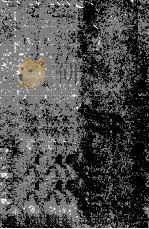
- THE ELT CURRICULUM
- 1988 BASIL BLACKWELL
-

- NOTIONAL SYLLABUSES A TAXONOMY AND ITS RELEVANCE TO FOREIGN LANGUAGE CURRICULUM DEVELOPMENT
- 1985 OXFORD UNIVERSITY PRESS
-

- CURRICULUM VITAE: AUTOBIOGRAPHY
- 1992 CONSTABLE
-
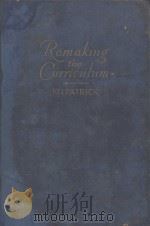
- REMAKING THE CURRICULUM
- 1936 NEWSON & COMPANY
-
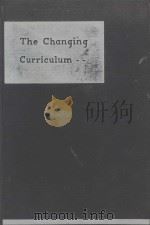
- THE CHANGING CURRICULUM
- 1937 D.APPLETON-CENTURY COMPANY
提示:百度云已更名为百度网盘(百度盘),天翼云盘、微盘下载地址……暂未提供。➥ PDF文字可复制化或转WORD



